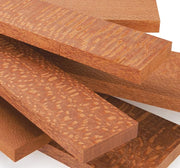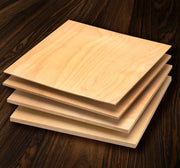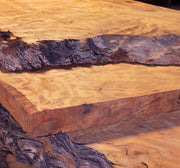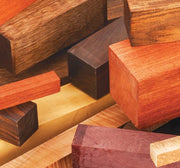Find the Perfect Wood for Your Next Project
Choosing the right wood is the first step in any woodworking project. At Woodcraft, we offer a wide selection of wood types to suit every need, from exotic hardwood to traditional domestic species. Whether you're into wood carving, furniture making or DIY crafts, you'll find high-quality materials for any skill level.
Explore Different Types of Wood
Our collection includes durable hardwoods like Oak, Maple and Walnut, as well as exotic hardwoods such as Purpleheart and Padauk. Whether you need wood blanks for carving or a specialty wood for a custom project, we've got you covered.
Our Wood Selection Includes:
- Carving Stock – Ideal for wood carving, featuring different types of wood like Balsa, Basswood and Butternut, just to name a few.
- Dimensional Lumber – Pre-cut and ready for cabinetry, furniture and framing.
- Wood Dowels – Great for joinery, decorative accents and furniture building.
- Edge Banding – A professional finish for exposed edges.
- Inlay – Add intricate decorative details to your projects.
- Knife Scales – Elevate your next knife kit making with a custom handle crafted from high-quality wood.
- Plywood – This is not your typical box-store plywood. Our selection includes both domestic and exotic hardwood.
- Slabs – Perfect for one-of-a-kind tabletops, countertops, and desks.
- Turning Stock – Create bowls, spindles, and other lathe projects.
- Veneers – Enhance your work with a wide selection of fine veneers.
Shop Wood Online or In-Store
Find different types of wood easily—shop online or visit a Woodcraft store near you to explore our selection in person. You can also order online and pick up at a local store for added convenience.
Woodcraft Has Everything You Need
After you’ve selected the perfect type of wood, be sure to round out your order with top-quality woodworking supplies, including wood filler, adhesives, finishes and power tools. At Woodcraft, we provide everything you need to bring your vision to life.





